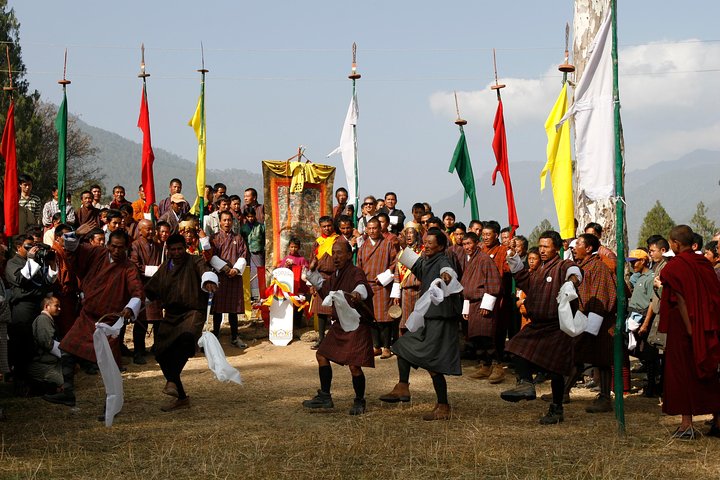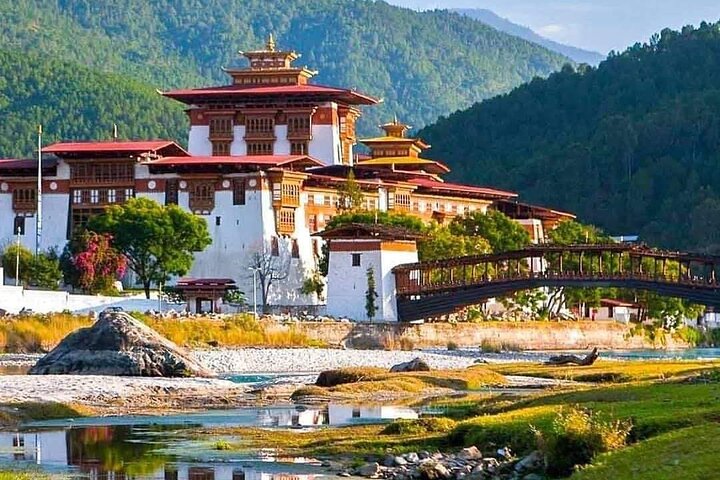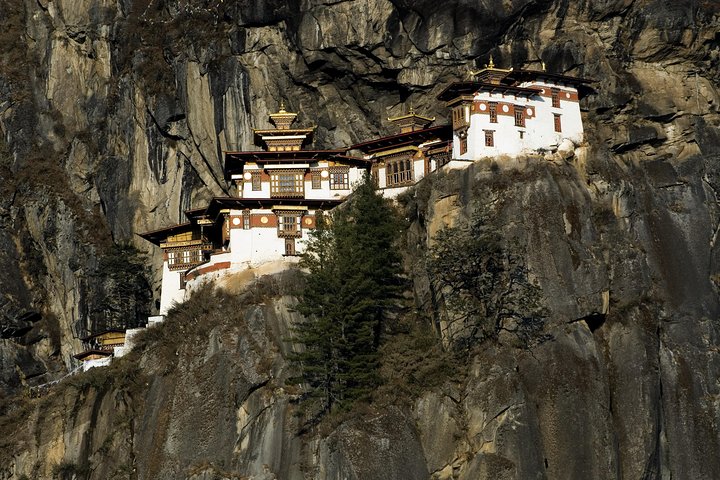Exploring Thimphu: A Harmonious Blend of Tradition and Modernity
Drawn by the allure of Bhutan’s unique blend of ancient and modern, I embarked on a journey through Thimphu, eager to explore its cultural treasures and natural wonders.
A Journey Through Time: The Heart of Thimphu
As I stepped into Thimphu, Bhutan’s capital, I was immediately struck by the harmonious blend of ancient traditions and modern life. The city, nestled in the Himalayas, is a living testament to Bhutan’s commitment to preserving its rich cultural heritage while embracing the conveniences of the modern world. My journey began at the Thimphu Chorten, a magnificent memorial that stands as a beacon of spirituality and devotion. The Chorten, adorned with intricate carvings and vibrant murals, is a place where locals gather to circumambulate and offer prayers. I joined them, walking clockwise around the Chorten, feeling a deep sense of peace and connection to the spiritual energy that permeates the air. The experience was a gentle reminder of the importance of mindfulness and the power of tradition in grounding us in the present moment.
Encountering Bhutan’s Unique Wildlife
Leaving the spiritual aura of the Chorten, I ventured to the Motithang Takin Preserve, home to Bhutan’s national animal, the Takin. This peculiar creature, with the head of a goat and the body of a cow, is a symbol of Bhutan’s unique biodiversity. As I observed the Takins grazing peacefully, our guide shared the fascinating legend of their creation, a tale that speaks to the deep connection between Bhutanese culture and the natural world. The preserve is a sanctuary not only for the Takins but also for visitors seeking to understand the delicate balance between nature and culture in Bhutan. It was a humbling experience, reminding me of the interconnectedness of all living beings and the importance of preserving our natural heritage.
A Tapestry of Culture and Craftsmanship
The afternoon was a celebration of Bhutanese art and craftsmanship. At the National Institute for Zorig Chusum, I watched as students diligently practiced the 13 traditional arts and crafts of Bhutan. Their dedication to mastering these ancient skills was inspiring, a testament to the enduring legacy of Bhutanese culture. The Royal Textile Academy further showcased the intricate art of weaving, with exhibits that included the exquisite bridal dress worn by Her Majesty Queen Jetsun Pema. Each piece told a story, woven into the fabric of Bhutan’s history and identity. My day concluded at the Tashichho Dzong, a stunning fortress that exemplifies Bhutanese architectural grandeur. Built without nails or steel, the Dzong stands as a monument to the ingenuity and craftsmanship of Bhutan’s ancestors. As I wandered through its halls, I felt a profound respect for the traditions that continue to shape Bhutan’s present and future.
Thimphu is a city that invites you to explore, to learn, and to reflect. It is a place where the past and present coexist in harmony, offering a unique glimpse into the soul of Bhutan. My journey through Thimphu was not just a tour of a city, but a deep dive into a culture that values mindfulness, tradition, and the beauty of the natural world. I left with a heart full of gratitude and a renewed appreciation for the rich tapestry of life that is Bhutan.













































